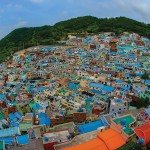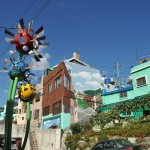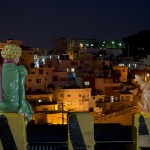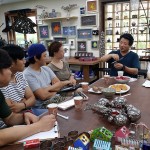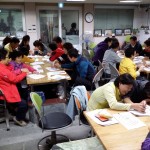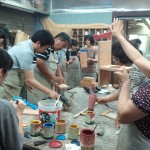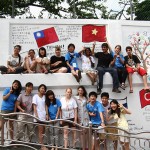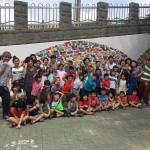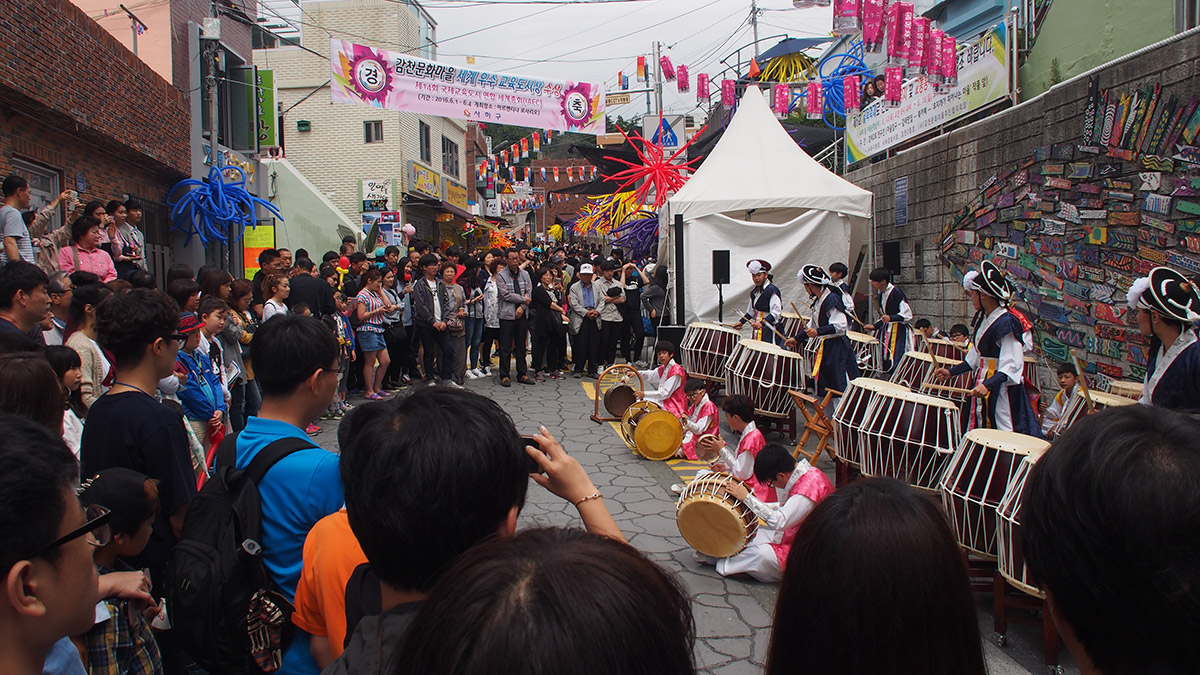
SAHA-GU: Gamcheon Cultural Village
Local government, town planners, artists and residents collaborate on the cultural regeneration of a marginalized area, transforming it into an active village full of life.
Saha-gu has 375,000 inhabitants and is part of the greater metropolitan area of Busan, Republic of Korea. The history of the Gamcheon Village, located on a city slope, goes back to the 1950s when thousands of refugees from the Korean War from all over the country began living there, making it a large area of hurriedly built houses piled on top of each other on the hillside. Its streets form a labyrinth and the pastel colors of its houses give the village a picturesque look.
With the rise of industrialization, Gamcheon reached almost 30,000 inhabitants, but afterward most of its population moved to other cities, and the population fell to 8,000.
This is an aging population, made up 24% of people over 65. Many of the houses were abandoned, which together with the lack of basic infrastructure (running water, sewer system, etc.), gave it a rundown look, in danger of disappearing over the time.
In 2010, the local Government of Saha-gu, in collaboration with urban planners, artists and the residents, had the idea of regenerating the area and attracting tourism, opting for a sustainable development that would respect its unique character and artistic value.
In order to carry out this urban renewal process, a Residents’ Council was set up to promote the quality of life in the village and find solutions to the problems that arise.
Organized into different working groups, the residents are involved in areas such as house repairs, opening local businesses, promoting the village, care and cleaning of the streets, etc.
On the one hand, a major effort is being made at renovations in order to improve the infrastructures (retaining walls, running water and sewage system, street paving, parking areas, etc.). On the other hand, artists and residents have begun repairing the homes of the elderly with low incomes, as well as renovating abandoned houses in order to give them a new community use: museums, art galleries, etc. Thus, for example, an old public house has become a community centre where various cultural and educational activities are organized.
At the same time, the opening of village businesses is stimulated: shops, cafés restaurants, galleries, crafts workshops, hotels, etc. Commercial activities are creating jobs and generating income for the residents, part of which goes back into the community in different ways: distribution of food, organization of festivals and events, reparation of houses, etc. In order to enhance the residents’ capacity and self-management, they are offered courses in several areas, such as, for example, the management of business and sales techniques or the creation of craft workshops for the local craftspeople, etc.
Furthermore, volunteers are trained to give guided tours of the village and stimulate the curiosity and creativity of children in this unique area through the “Growing through Art” initiative.
Moreover, sculptures and murals by artists and residents in the narrow streets of the village embellish it and surprise visitors.
The numerous color tones of the homes, the more than 40 works of art exhibited in the village, the craft shops, the art galleries and cafés, together with the programming of different cultural festivals and the participation of the residents in the revitalization, care and promotion of the village, give it a unique appeal.
In 2015, Gamcheon was visited by more than 1,400,000 people, changing it from a poor marginalized area into a cultural, dynamic village full of life.
Presented by: The local government of Saha-gu, Division of Lifelong Learning
Contact: Mr. Jeoung Seoungkoy
e-mail: jskoy@korea.kr

